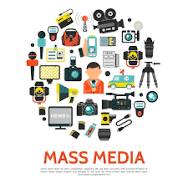Command/Planned/Socialist Economic System
The command economy otherwise called socialist/ centrally-planned economy is an economy in which the productive resources are mainly owned by the state. It is an economy or society where the government (state) makes all decision about production and consumption through a system of centralized planned mechanism. With the command economy or centrally planned or socialist economy, the decisions regarding what, how much, How and for whom are taken by a central planning authority or committee. It estimates the assortment of goods which it considers people want and directs resources into producing them. It also decides how the goods produced shall be distributed among the community. Thus, economic efficiency largely depends upon how accurately wants are estimated and resources allocated. Also, a greater proportion of resource is owned by the state on behalf of the people. Consumer sovereignty is greatly limited in this economy. Karl Marx (1818-83) a German economist and Socialist was the chief advocate for a Communist or Centrally planned economic system. Price levels are not determined directly by the forces of supply and demand but are fixed by the government.
Features or Characteristics
• Non-existence of profit motive
• State / Public ownership
• Reliance on the Economic Planning Agencies and committees for allocation of Resource
• Social welfare motive
• No market forces in pricing the goods and services produced
Advantages
1. There is greater equality in the distribution of wealth and income. This is because all factors of production, except labour are owned by the state. Firms produce for the benefit of all according to their needs and not profit.
2. There is the ability to mobilize large scale economic resources especially capital effectively and to channel them into their most productive long-term uses
3. Ensure that adequate resources are devoted to community, public and merit goods
4. Eliminates the inefficiency resulting from competition
5. Uses its monopoly power in the interest of the community e.g. by securing the advantages of large-scale production rather than making maximum profits by restricting output.
6. Uses advertising to inform rather than simply to persuade or brainwash.
7. There is high degree of equality in society. This is because ownership, production and distribution are not in private hands for profit but under the control of the state for equitable benefit for all.
Disadvantages
1. Estimating the satisfaction derived by individuals from consuming different goods is impossible
2. Many officials are required to estimate wants and to direct factors of production- waste of labour and bureaucracy.
3. Even when wants have been decided upon difficulties of co-ordination arise
4. It is argued that state ownership of resources, by reducing personal incentive, diminishes effort and initiative.
5. There is the political danger. Once individual have given power to the state to decide what is good for them, to own all factors of production and to direct labour, it may eventually seize absolute political power
6. Consumers’ sovereignty is limited
Comparison between Price and Command Mechanism
1. In the capitalist/Price economy system resources are predominantly owned and controlled by individuals who are responsible for deciding what, how much, how to produce and how to distribute. In the command or socialist system, on the other hand, the resources are predominantly owned by the state which determines what to do with them.
2. In the capitalist economic system what to produce, how much to produce etc. are determined on the basis of market prices i.e. price mechanism. In command or socialist economic system, the decision as to what to produce, how much to produce etc. are made by a state planning committee in accordance with national aspirations.
3. In the capitalist economic system prices are normally free to vary in accordance with changes in demand and supply. In the socialist economic system prices are fixed by the planning authority.
4. Incomes tend to be more unequally distributed under the capitalist economic system than under the command economic system and the demands for the rich tend to be met more than the demand of the poor.
5. The capitalist economic system tends to produce a slower rate of economic growth because the proportion of income saved and invested tends to be smaller (this is debatable).
6. There is a greater degree of consumer sovereignty under the capitalist economic system.
7. The capitalist economic system is cheaper to operate because it requires a smaller administrative apparatus.
Mixed Economy
The mixed economy includes elements of both market and planned economies. It is an economic system in which some resources are owned and managed by the state and others by the private sector or producers. The government operates and controls the public sector, which typically consists of a range of public services such as health, defense, electricity, water and education, as well as some local government services. The private sector is largely governed by the price mechanism and market forces; although in practice it is also controlled by various regulations and laws. We see in most cases a large private sector co-existing with small public state enterprises. The government thus plays a significant role in this type of economy.
Why the Role of the Government?
1. They are done to prevent the unacceptable features of free-market (or capitalist) economy like, growth of monopolies, unemployment, divergence between private and social advantages.
2. To obtain a balanced regional development. For example, when the government interferes with the location of industries at particular places or give incentives to industrialists to build factories in say “depressed areas”.
3. To overcome problem of immobility of factors like the establishment of National Investment Bank and other Development Banks to channel capital to the needed sectors due to absence of stock exchange.
4. The need to overcome the problem caused by the existence of public goods like roads, libraries, electricity supply and externalities. Hence the establishment of Ghana Highway Authority, Ghana Library Board.
Features or Characteristics of Mixed Economies
1. Co-existence of private and public ownership of resources.
2. Government influences economic activities directly and indirectly. The governments are active in the area of economic planning, regulating private corporate activities, taxing private individuals and corporations, conducting and regulating foreign trade, manipulating and controlling wages, interest rates and other prices, redistributing incomes and host of other diverse activities.
3. Redistribution of income and wealth
4. Improve productive efficiency
In many respects, the invisible hand of the market mechanism has been replaced by the guiding hand of the central government. An example of such economies is Britain.
Advantages of Mixed Economic System
1. Efficient allocation of resources is assured
2. It allows for competition, pure monopoly is minimized
3. Cost of living can be brought under control
4. It creates employment opportunities
5. Foreign private investment brings in improved technology
6. It promotes high standard of living
3.6 Functions of an Economic System
At the beginning of the study of economic systems we have observed that because of a society’s limited resources and unlimited wants certain decisions or choices must be made. These decisions became the major economic functions which must pre-occupy an economic system. Thus, the following are considered as the major function or basic problems in economics.
1. One main function of an economic system is to decide on what goods and services to produce. Since resources are scarce a society cannot produce all its goods and services. It must determine which one to produce and which not to produce. This decision will be affected by other factors such as the expectations of citizens, educational level and religion etc. based on the scarce resources a society may decide to produce roads and hospitals and not a conference center.
2. A second function of an economic system is to decide on how much to produce of goods and services. Since resources are scarce, not all goods and services can be produced in the same quantity.
3. Thirdly, an economic system functions to determine how the goods and services decided upon are produced. That is, methods to be involves in producing the goods and services. Depending upon the relative scarcity of the resources, a society may decide either to use capital-intensive or labor-intensive methods to produce the required goods and services.
4. A fourth function of an economic system is to determine how products (goods and services) are divided or distributed between households or among the members of the community. The economic system will function in such a way to determine which shares are to go to each household or member. Apart from this, the system will also have to work out the combination of different goods and services that will form one share.
5. Finally, the economic system must function to maintain and provide an adequate rate of economic growth of per capita income thus the system will provide the pre-requisites for increased productivity. To achieve productivity the system attempts to increase the rate of investment through the mobilization of domestic savings and foreign assistance. The system will also have to ensure changes in technology, extensive education and training of the labour force, all geared toward increasing productivity.



No comments yet
Be the first to share your thoughts!